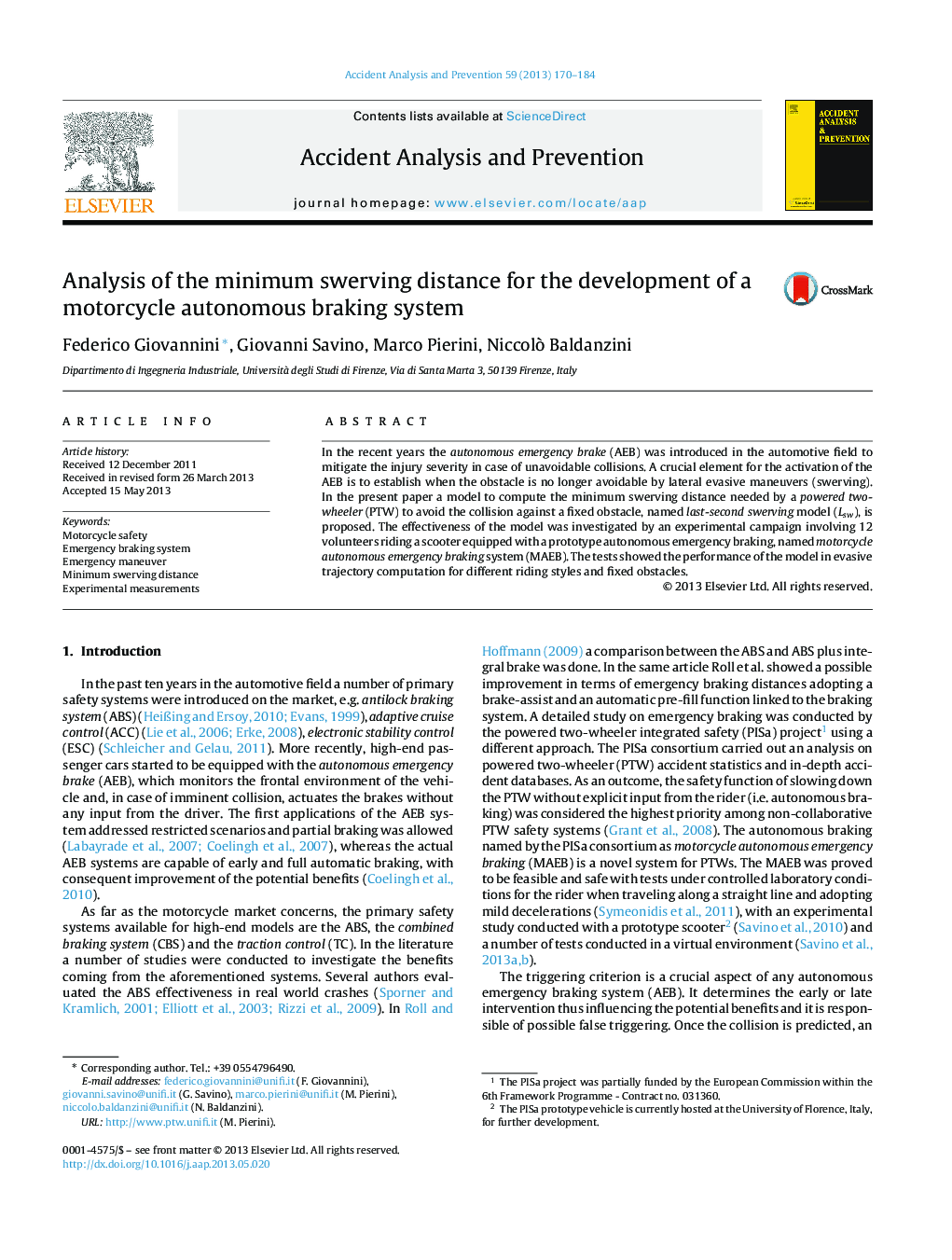| Article ID | Journal | Published Year | Pages | File Type |
|---|---|---|---|---|
| 6966107 | Accident Analysis & Prevention | 2013 | 15 Pages |
Abstract
In the recent years the autonomous emergency brake (AEB) was introduced in the automotive field to mitigate the injury severity in case of unavoidable collisions. A crucial element for the activation of the AEB is to establish when the obstacle is no longer avoidable by lateral evasive maneuvers (swerving). In the present paper a model to compute the minimum swerving distance needed by a powered two-wheeler (PTW) to avoid the collision against a fixed obstacle, named last-second swerving model (Lsw), is proposed. The effectiveness of the model was investigated by an experimental campaign involving 12 volunteers riding a scooter equipped with a prototype autonomous emergency braking, named motorcycle autonomous emergency braking system (MAEB). The tests showed the performance of the model in evasive trajectory computation for different riding styles and fixed obstacles.
Related Topics
Physical Sciences and Engineering
Chemical Engineering
Chemical Health and Safety
Authors
Federico Giovannini, Giovanni Savino, Marco Pierini, Niccolò Baldanzini,
